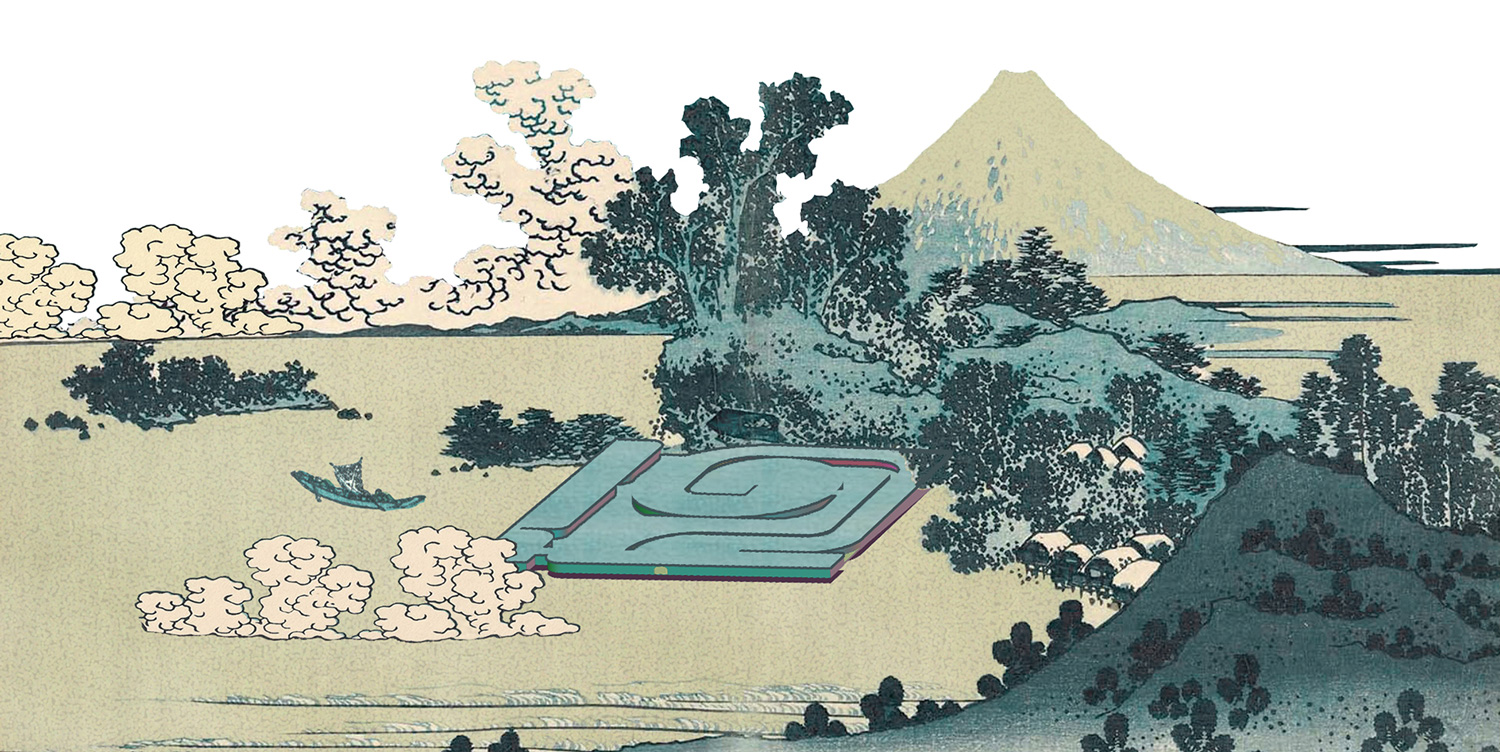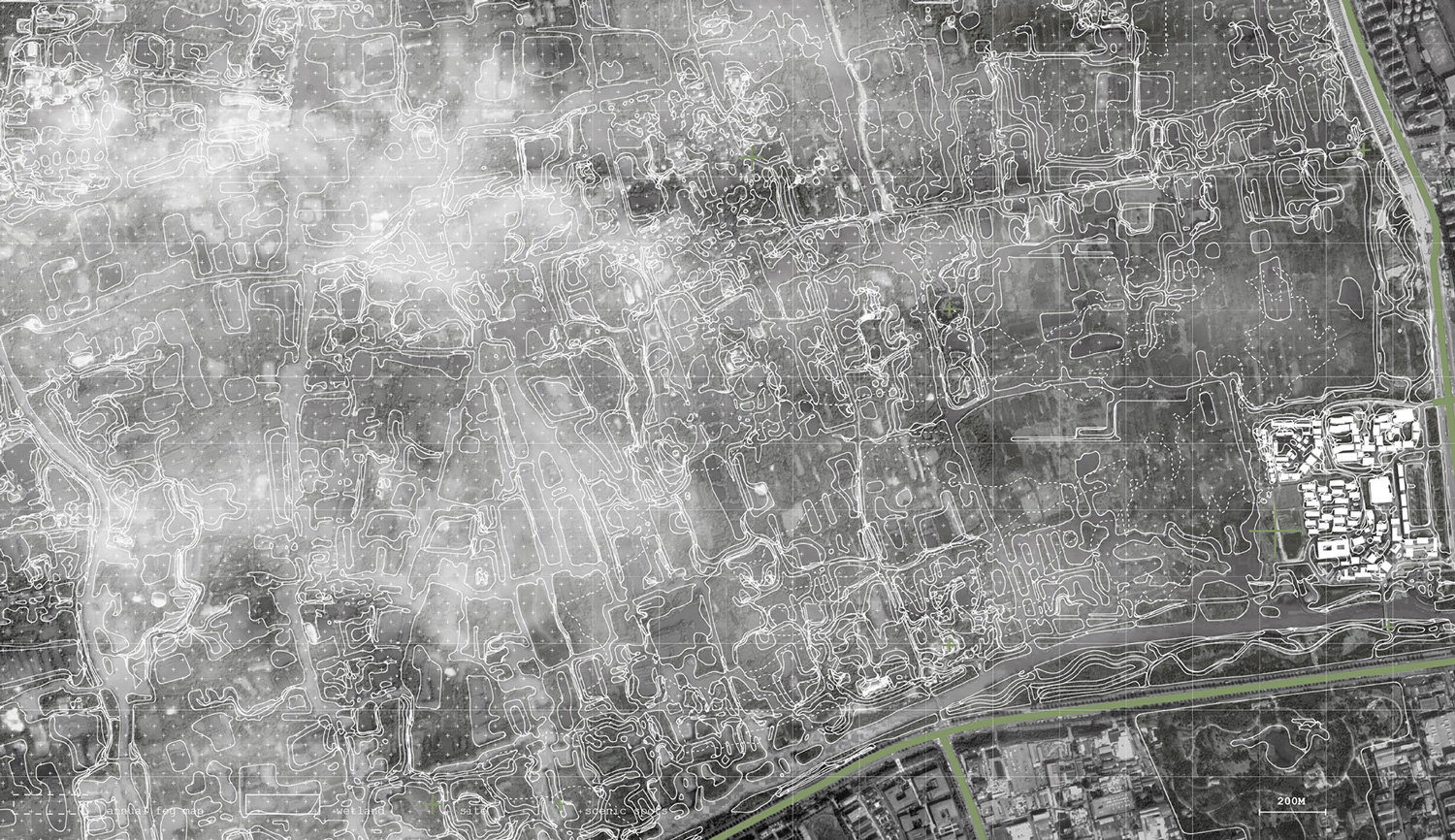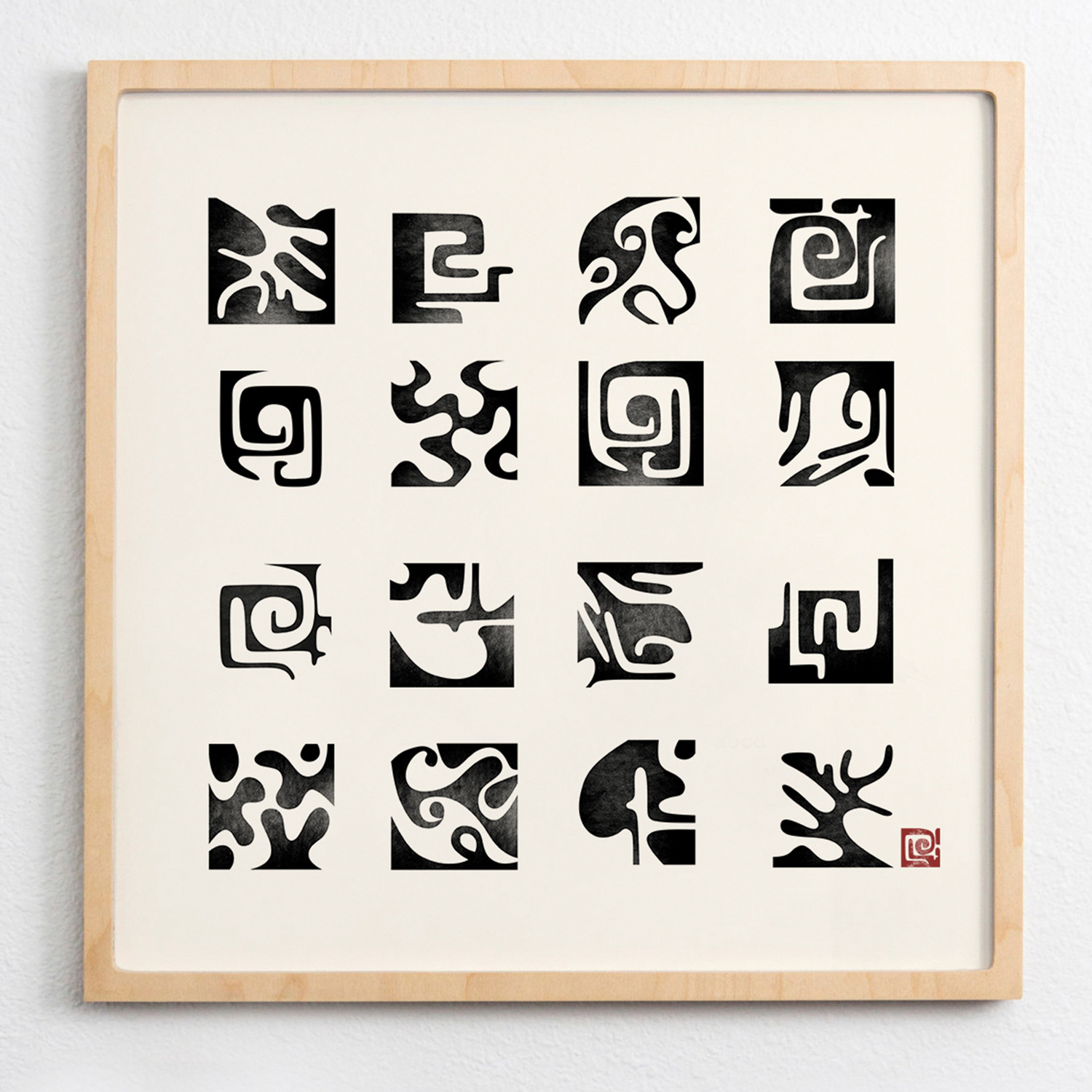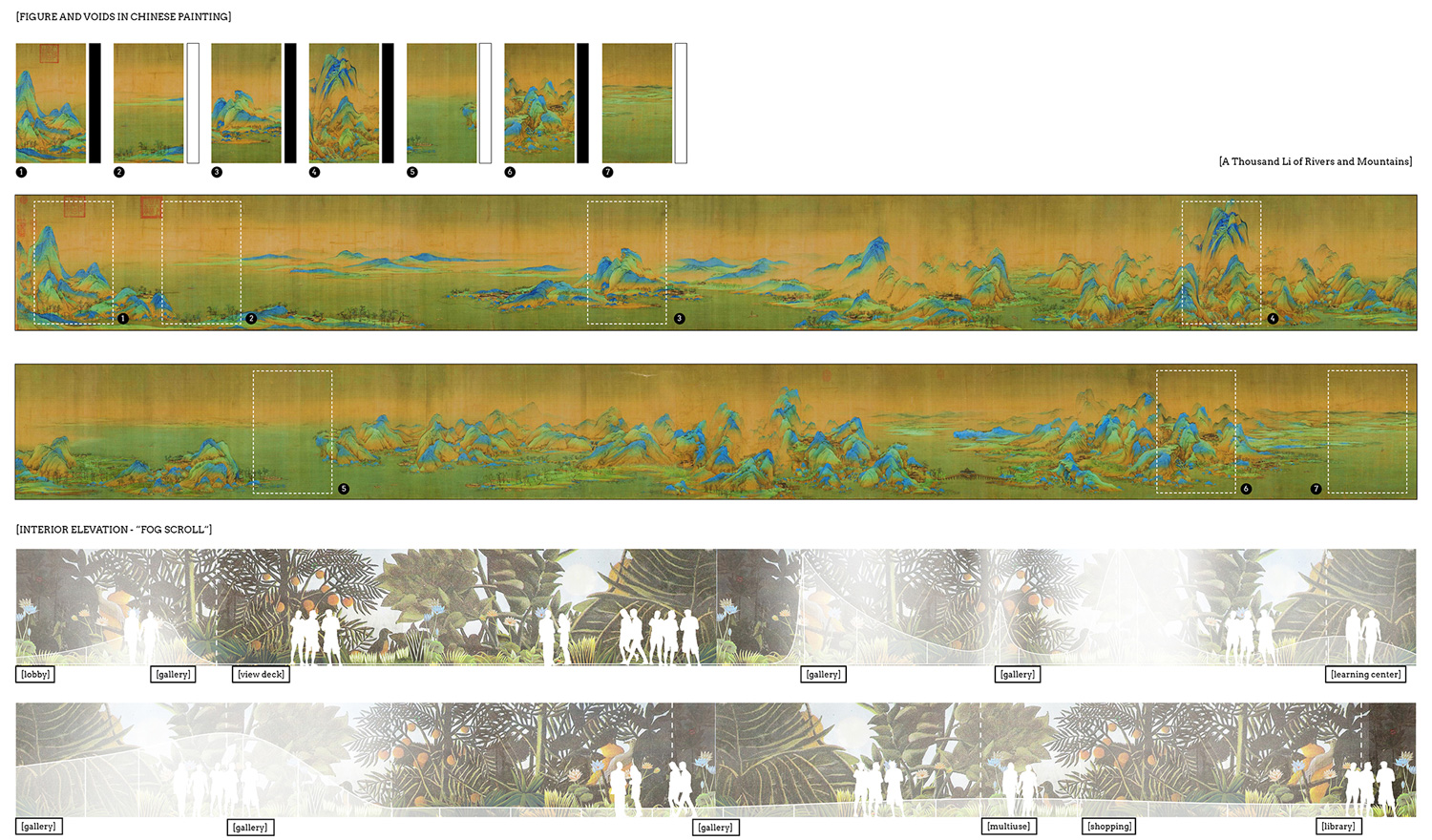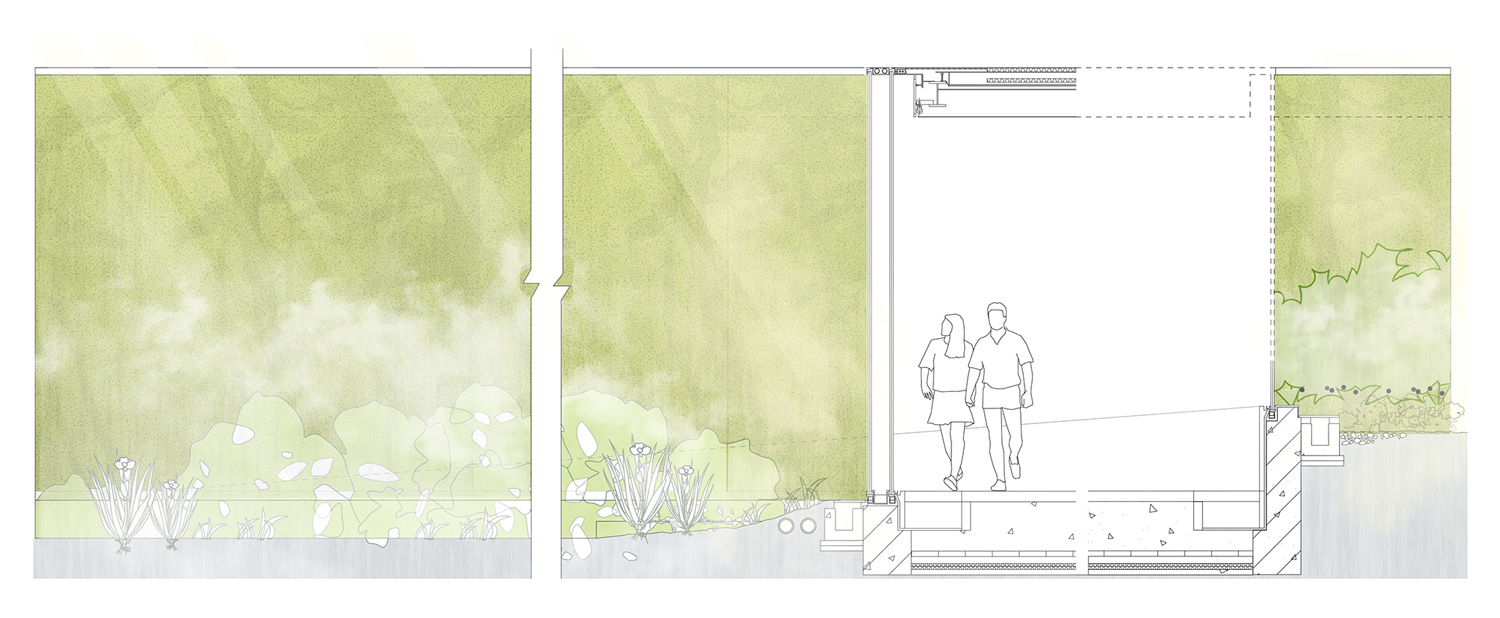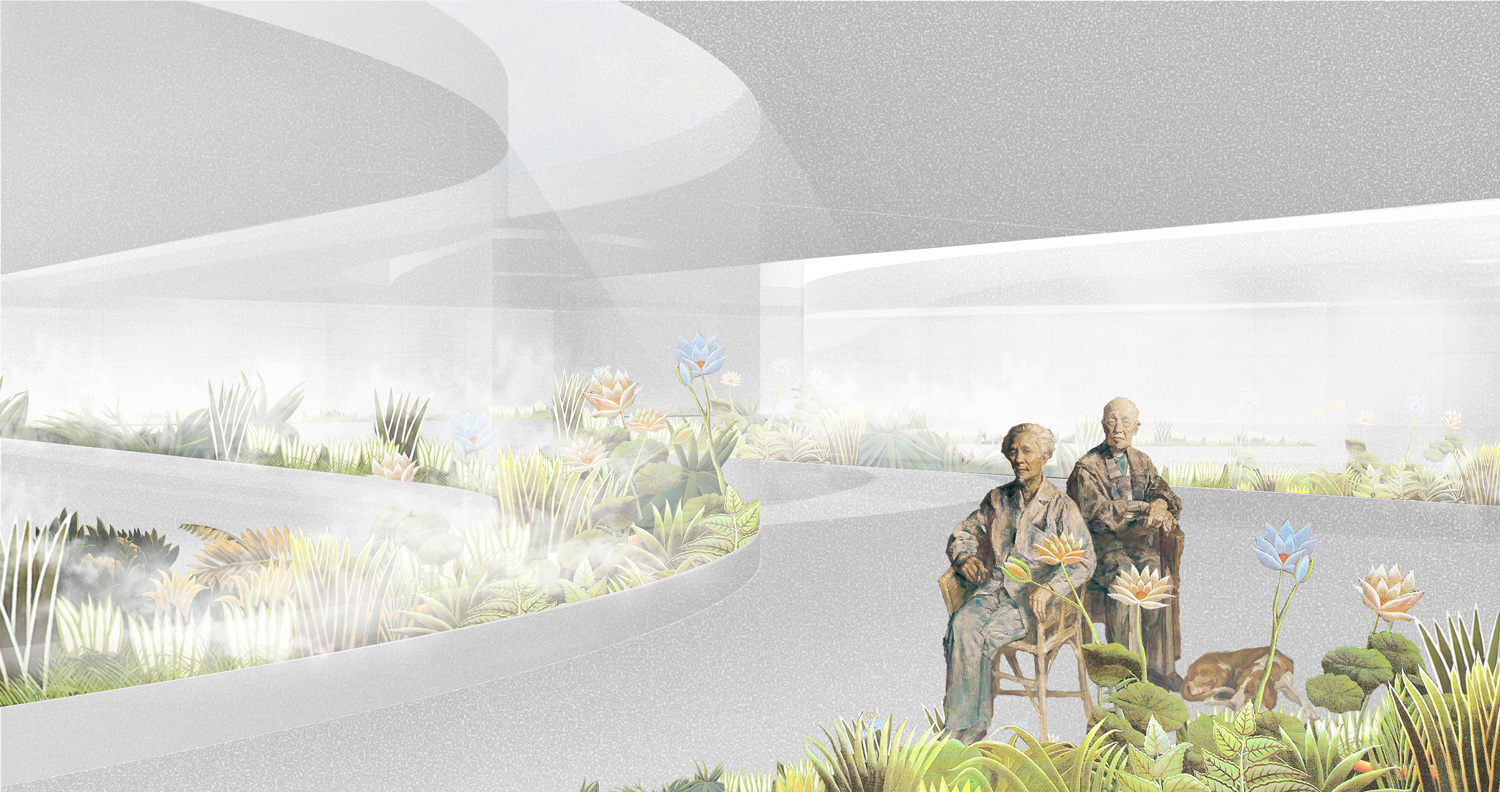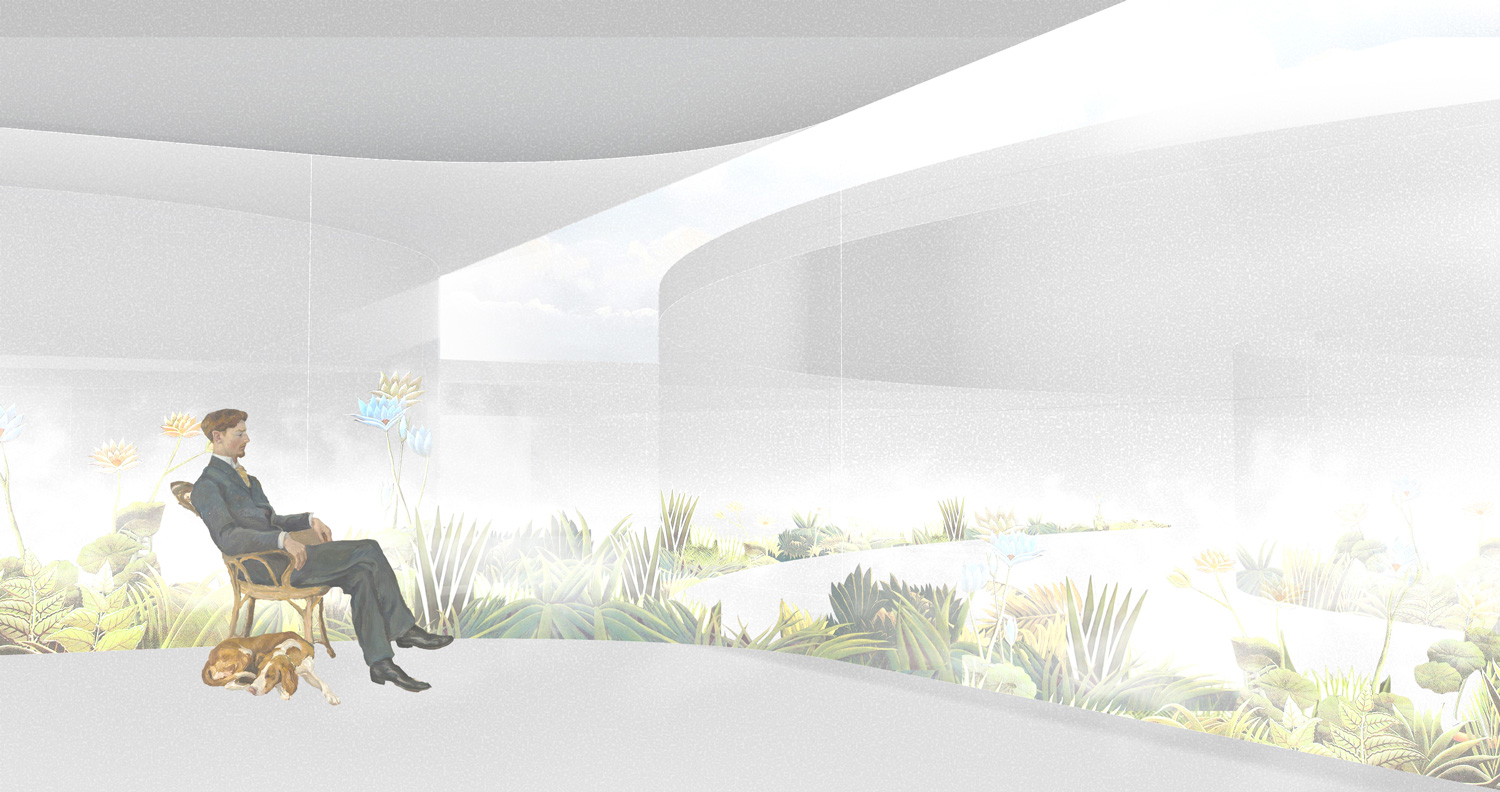☉ A Museum With Wetland and Fog is a proposal by Uncertainty Network Office developed in 2019. It is located in Hangzhou China in a rural and riverside setting. Its scale is medium with a surface of 3.265 sqm. Key materials are concrete and glass.
James Whistle conjured modernity to lost and unseen PSYCHIC SPACE, filled with spirits of Nature. As we know, Chinese water-painting and Japanese Ukiyo-e, with aesthetics of transparency, weightlessness, dematerialization of silence and emphasis of rhythm, focus on the pursuit of psychic. And it offers me an inspiration on how I can combine Chinese culture with modern architecture in souls: extract the spirits from traditional Chinese paintings and shape them into The Museum of Chinese Painting and Calligraphy in Hangzhou.
The museum is located in Xixi National Wetland Park in Hangzhou. The park is densely crisscrossed with six main watercourses, among which are scattered various ponds, lakes and swamps. It is famous for the scenery of trees, waterways and mist. Our site is in the southeast corner of the park, the tourists center area. The design is to introduce the wetland scenery and mist into the architecture and city by Materializing the landscape flow into «walls». correspond thickness to local acoustic and partition conditions. Continuous wall illustrates a continuous view along circulation like the Chinese scrolling paintings spreading as you walk. The voids in the paitings are translated into the fogs in the glass wall. The museum turns out to be a Chinese traditional painting itself.
Blur makes things void of details, with only shading, rhythm, the pattern left, which are regarded as essential, in Chinese painting. After reducing details and chaos, it is easier for us to reach universal principles and psychic parts. Bring the thinking of nothing, so does the panorama of everything.Due to the fog generating from the water in the glass wall, pattern and transparency vary in time: fog grows and the transparency decreases from morning to noon; reduces and increases afterward. So, walls let less sunlight go into space and regulate the temperature, homogenizing lighting to a suitable level sideways automatically. In summer, walls reduce sunlight to avoid scorching while in winter walls let sunlight in to warm the rooms so that energy-efficiency is realized.
